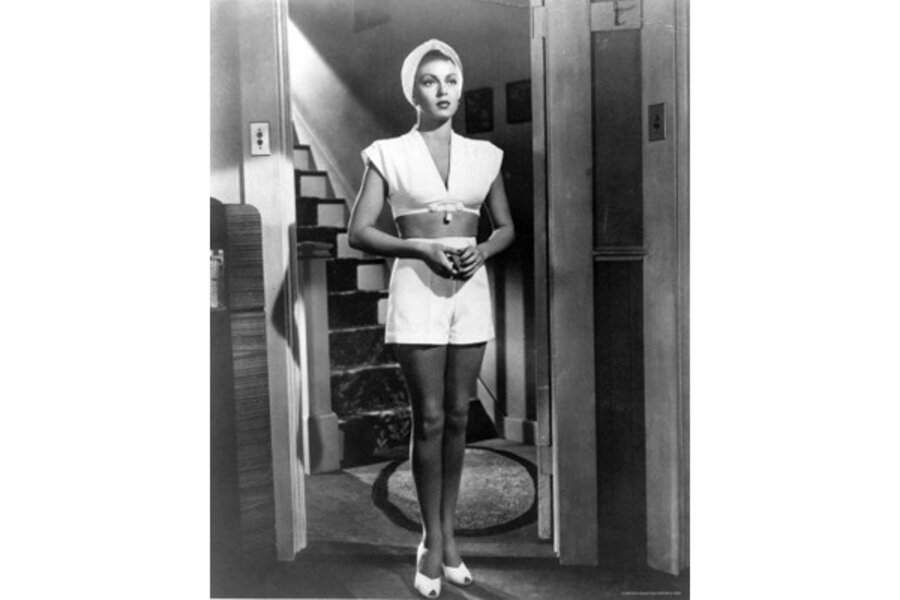L.A. noir: darkness under the sun
Loading...
In the world of literary noir, no one gets out of Los Angeles with his soul intact.
Lurking amid the cookie-cutter houses and sun-dappled streets are men and women on the make. They're searching for love, for fame, for money, for all of the above and more. If people block the path to success, well, there are ways to make sure they don't stay in the picture.
The literary noir movement started in L.A.: There was James M. Cain, an Easterner who found inspiration for "Double Indemnity" and "The Postman Always Rings Twice" in the city, and Raymond Chandler, creator of the private eye Philip Marlowe, who starred in "The Big Sleep" and "The Long Goodbye."
Why L.A. and why the 1930s and '40s? In hot pursuit of the answer, last weekend I joined a couple dozen other people on an L.A. noir bus tour run by the Esotouric company. We traveled from Hollywood to East L.A. to downtown in search of the places that inspired Cain's books and that appear in the films based on them.
Each year, Richard Schave and Kim Cooper – the married cofounders of Esotouric – take hundreds of Angelenos and visitors on tours of L.A. sites connected to local authors (like Charles Bukowski, the "laureate of American lowlife") and real-life crimes.
After the noir tour, I asked Schave about how the City of Angels inspired L.A. literary noir.
Q: You took us to L.A.'s Skid Row to show us where James M. Cain and Raymond Chandler picked up the brittle lingo that made their novels so distinctive. What did they learn in Skid Row?
A: It was on Skid Row, at the intake missions along Los Angeles Street and the speakeasies along Spring & Main, that Cain found the cadence that he tried hard to duplicate in early novels and plays, but to no avail.
Once Cain trained his ear to get that cadence and tone on paper, we get "The Postman Always Rings Twice," and the Hard-Boiled School of American Letters is born.
Chandler, a writer who made nothing up, simply wandered through the single-room occupancy buildings that often housed single men, sitting in the lobbies and taking notes.
Chandler got not only his cadence and style from the downtown underground culture which Prohibition had created, but also the prototype for Philip Marlowe – Thomas H. James, a famously demoted police investigator.
James was far too efficient in an investigation of a mafia heavy at a time when efficiency was the last thing needed in such a delicate investigation. Demoted to the intersection control beat of 7th & Broadway, his rants and denunciations to passersby at the busiest intersection in Los Angeles were famous.
Raymond Chandler worked two blocks up at Olive & 7th as a disillusioned insurance executive. His famous wanderings to SROs and speakeasies in his afternoons of office loafing brought him into close contact with James.
Q: What are some of the other roots of the hard-boiled style of noir that made their way into books, movies and even the L.A.-based TV show "Dragnet"?
A: This thirst Angelenos had for anonymous crime reporting and its style is very important. There was the milk run, the 5 a.m.-10 a.m. stint that the city desk reporter, accompanied by a photographer, makes to the Lincoln Heights jail and its courthouse, and then to Hollenbeck and Central police stations for the daily dose of anonymous crime – run-of-the-mill, just-the-facts stories.
That paradigm, which was codified back in the 1930s and in practice at all the papers through the early 1960s, was the warp and weft which makes up Los Angeles literature.
Q: What else about L.A. affected noir writers?
A: Every Angeleno struggles after two kingdoms, the finite and the infinite.
The finite is the world of money and power, every person who gets rich is one less who won't. Which one am I? Every dollar for him is one less for me. Every role for someone else is one less for me. This finite world drives this city and its inhabitants to the brink of murderous rage and apoplexy.
But then there is the promise of the kingdom of the infinite: Salvation, release, a bounty of love, peace, and nourishment.
The great visionaries, some of which were writers, gave Angelenos the promise of both kingdoms. All great L.A. leaders and writers are in some way speaking to this struggle.
***
The L.A. literary noir genre is hardly history. You can still find it in the novels of James Ellroy and in movies like "L.A. Confidential," based on one of his books.
Most recently, HBO announced that it is remaking "Mildred Pierce," the classic James Cain novel that became a quintessential noir movie starring Joan Crawford. This time, Mildred will be played by Kate Winslet.
In a trailer for the miniseries, due in 2011, you can hear Mildred's plaintive voice: "Haven't I given you everything?"
It's L.A. It's noir. No spoiler alert needed here: Whatever she's given, it's not enough.
***
One final note: My noir tours will continue. I'll be in Savannah, Ga., later this month and plan to find a "Midnight in the Garden of Good and Evil" tour based on the 1990s bestseller. If you've got a tour to recommend, drop me a line at randydotinga@gmail.com. I'll report back in this space.
Randy Dotinga regularly reviews books for the Monitor.





